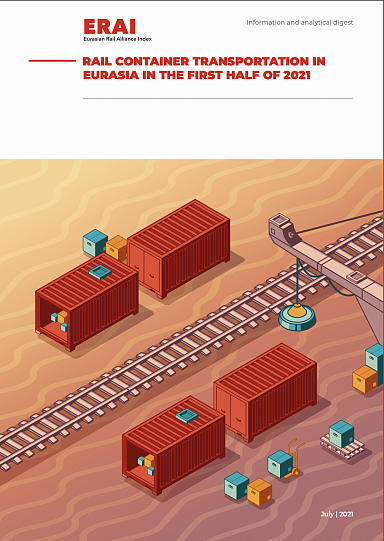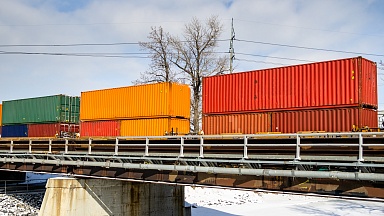2. Container volumes transported along the Eurasian railway route amounted to 336.6 thousand TEUs, which is 50% more than in the same period last year. The average number of train departures per day increased from 10.6 trains in 2020 to 15.3 in 2021 year over year, and train loading increased up to 115 TEUs. However, the capacity limitations led to a slight increase in transit time up to 6.84 days, which is higher than the level of 2020, but close to the indicators of previous years.
3. Mechanical equipment and machinery, electrical devices, vehicles account for 46% of the cargo volumes. However, the share of these products is gradually decreasing because of the diversification of the cargo nomenclature.
4. The share of empty containers on the route dropped to a record 6%, and in the Europe-China traffic decreased to 14%, which is the lowest recording throughout the corridor’s history of operations.
5. In the first half of the year, 59 new routes were added to the route network, 15 of which are eastbound and 44 are westbound. The development of multimodal transportation from the Kaliningrad transport hub is enjoying particular interest.
6. The economic recovery of the European Union and the development of the Chinese economy contribute to the growth of mutual trade. Notwithstanding the continuing imbalances in trade flows (a significant negative balance of the EU in trade with China), the economic situation favors Trans-Eurasian rail transit cargo transportation.
7. In the first half of 2021, railways once again established themselves as a faster and more reliable alternative to maritime transport. In June 2021, maritime freight rates renewed another record, rising to $ 7,400 per Forty-Foot Container Equivalent Unit (FEU) amid disruptions at ports in South China and widespread container equipment shortages.
8. The confident recovery of air transport may conflict with the lack of belly capacity, which still has not been put back on after a sharp drop in 2020. This allows railways to compete with air transport in the e-commerce transit segment.




